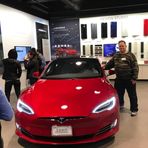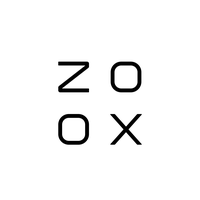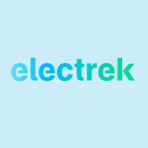The Shift in the Driverless Landscape: Tesla's Leadership Exodus and Technical Troubles
December 18, 2024, 6:06 pm

Location: United States, Texas, Austin
Employees: 10001+
Founded date: 2003
Total raised: $3.86B

Location: United States, California, Foster City
Employees: 1001-5000
Founded date: 2014
Total raised: $700M
The world of autonomous vehicles is a high-stakes race. Recently, two significant events have sent ripples through this industry. First, a key player from Tesla has jumped ship to Amazon's Zoox. Second, Tesla is grappling with serious technical issues in its latest vehicles. These developments could reshape the future of self-driving technology.
Zheng Gao, the former head of hardware development for Tesla's Autopilot, has left the company after eight years. His departure is not just a footnote; it’s a seismic shift. Gao has joined Zoox, Amazon's ambitious venture into the realm of driverless cars. This move comes at a critical juncture for Tesla. The company is gearing up to launch fully autonomous driving technology next year. Yet, the road has been bumpy. Elon Musk has been promising this rollout for six years, but the finish line remains elusive.
Gao's experience is formidable. He spent three years at Tesla, leading the charge on hardware that powers Autopilot and Full Self-Driving features. Before that, he honed his skills at Apple for a decade, contributing to the development of various electronic devices. His expertise is a valuable asset for Zoox, which is also focused on creating autonomous vehicles.
Zoox is not just another tech company. It’s part of Amazon Devices & Services, alongside giants like Amazon Alexa and Kuiper Systems. The company recently announced the launch of its robotaxi service in San Francisco. With Gao at the helm of hardware development, Zoox is poised to make significant strides in the autonomous vehicle sector.
However, Tesla is facing its own set of challenges. Reports have surfaced about malfunctions in the onboard computers of new Tesla models. The latest version, HW4, is experiencing short circuits. This is no minor glitch. Drivers have reported that essential features, including safety systems, cameras, GPS, and navigation, have failed shortly after hitting the road.
The problem appears to be widespread, affecting vehicles released in recent months. Sources indicate that the issue may stem from a short circuit caused by a low-voltage battery during camera calibration. This is a critical failure point. If the brain of the vehicle is compromised, the entire system falters.
Tesla is currently inundated with complaints but has yet to issue a service bulletin addressing the issue. Service centers are overwhelmed, pushing maintenance schedules into the next year. Employees have reportedly been instructed to downplay safety concerns related to the malfunction. This is a precarious position for a company that prides itself on innovation and safety.
The primary solution being discussed is a computer replacement. However, Tesla is also exploring a software patch as a temporary fix. This dual approach highlights the urgency of the situation. The company must act swiftly to maintain consumer trust and uphold its reputation.
The juxtaposition of Gao's departure and Tesla's technical woes paints a complex picture. On one hand, you have a seasoned leader moving to a competitor with fresh ambitions. On the other, a flagship company is struggling with reliability issues in its latest offerings. This could create a vacuum in Tesla's leadership at a time when it needs stability the most.
As the autonomous vehicle market heats up, competition will only intensify. Zoox, with Gao’s expertise, is set to challenge Tesla’s dominance. The landscape is shifting. Tesla's once-unassailable position is now under scrutiny.
Investors and consumers alike are watching closely. The promise of fully autonomous driving is tantalizing, but the reality is fraught with challenges. Tesla's commitment to innovation is commendable, but it must ensure that its technology is reliable.
The future of driverless cars hinges on trust. Consumers need to feel safe in these vehicles. They need to believe that the technology works as promised. If Tesla cannot resolve its current issues, it risks losing ground to competitors like Zoox.
In conclusion, the autonomous vehicle industry is at a crossroads. Leadership changes and technical failures can shift the balance of power. Tesla must navigate these turbulent waters carefully. The road ahead is uncertain, but one thing is clear: the race for driverless supremacy is far from over. The stakes are high, and the outcome will shape the future of transportation.
Zheng Gao, the former head of hardware development for Tesla's Autopilot, has left the company after eight years. His departure is not just a footnote; it’s a seismic shift. Gao has joined Zoox, Amazon's ambitious venture into the realm of driverless cars. This move comes at a critical juncture for Tesla. The company is gearing up to launch fully autonomous driving technology next year. Yet, the road has been bumpy. Elon Musk has been promising this rollout for six years, but the finish line remains elusive.
Gao's experience is formidable. He spent three years at Tesla, leading the charge on hardware that powers Autopilot and Full Self-Driving features. Before that, he honed his skills at Apple for a decade, contributing to the development of various electronic devices. His expertise is a valuable asset for Zoox, which is also focused on creating autonomous vehicles.
Zoox is not just another tech company. It’s part of Amazon Devices & Services, alongside giants like Amazon Alexa and Kuiper Systems. The company recently announced the launch of its robotaxi service in San Francisco. With Gao at the helm of hardware development, Zoox is poised to make significant strides in the autonomous vehicle sector.
However, Tesla is facing its own set of challenges. Reports have surfaced about malfunctions in the onboard computers of new Tesla models. The latest version, HW4, is experiencing short circuits. This is no minor glitch. Drivers have reported that essential features, including safety systems, cameras, GPS, and navigation, have failed shortly after hitting the road.
The problem appears to be widespread, affecting vehicles released in recent months. Sources indicate that the issue may stem from a short circuit caused by a low-voltage battery during camera calibration. This is a critical failure point. If the brain of the vehicle is compromised, the entire system falters.
Tesla is currently inundated with complaints but has yet to issue a service bulletin addressing the issue. Service centers are overwhelmed, pushing maintenance schedules into the next year. Employees have reportedly been instructed to downplay safety concerns related to the malfunction. This is a precarious position for a company that prides itself on innovation and safety.
The primary solution being discussed is a computer replacement. However, Tesla is also exploring a software patch as a temporary fix. This dual approach highlights the urgency of the situation. The company must act swiftly to maintain consumer trust and uphold its reputation.
The juxtaposition of Gao's departure and Tesla's technical woes paints a complex picture. On one hand, you have a seasoned leader moving to a competitor with fresh ambitions. On the other, a flagship company is struggling with reliability issues in its latest offerings. This could create a vacuum in Tesla's leadership at a time when it needs stability the most.
As the autonomous vehicle market heats up, competition will only intensify. Zoox, with Gao’s expertise, is set to challenge Tesla’s dominance. The landscape is shifting. Tesla's once-unassailable position is now under scrutiny.
Investors and consumers alike are watching closely. The promise of fully autonomous driving is tantalizing, but the reality is fraught with challenges. Tesla's commitment to innovation is commendable, but it must ensure that its technology is reliable.
The future of driverless cars hinges on trust. Consumers need to feel safe in these vehicles. They need to believe that the technology works as promised. If Tesla cannot resolve its current issues, it risks losing ground to competitors like Zoox.
In conclusion, the autonomous vehicle industry is at a crossroads. Leadership changes and technical failures can shift the balance of power. Tesla must navigate these turbulent waters carefully. The road ahead is uncertain, but one thing is clear: the race for driverless supremacy is far from over. The stakes are high, and the outcome will shape the future of transportation.

